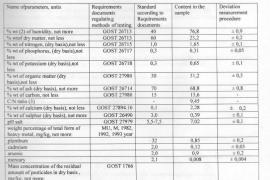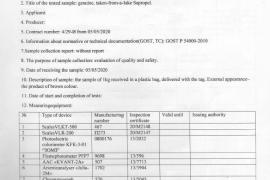LLC “Savala” Sapropel Natural Fertiliser
Greetings. My name is Tabuev Yuri. I am a ceo founder of a company called «Savala». The company is based in Petrozavodsk, the Republic of Karelia.
Our company producing the organic fertilizers and the additives from a product called sapropel.
Sapropel is s centuries-old fresh water bodies` bottom sediment, which was formed from dead vegetation, the remains of living organisms, plankton and humus.
Sapropel is used in crop production as an organic fertilizer and has an amazing effect. Sapropel includes sodium, potassium, phosphorus, vitamins (such as B, E, C, D, P), amino acids and ferments. Please also note that humic acids, contained in sapropel, has a disinfectant effect and stimulates the growth of plants.
The advantages of sapropel for the soil:
-
Heavy clay soils become softer
-
Allows to retain the fertility for 3-5 years
-
Helps to cleanse the soil of pathogenic bacteria, microorganisms, fungus and nitrate
-
Enriches the soil and forms a fertile layer
-
Allows to increase the amount of humus in the soil
-
The substrate, in which the sopropel is added, keeps the soil moisturized longer. As a result, requires less watering
The advantages of sapropel for plants:
-
Increases the yield (up to 100%)
-
Improves the quality of the final product
-
Promotes longer flowering of ornamental crops
-
Stimulates the development of a strong root system
-
Improves an establishment of seedings
-
Nourishes plants actively throughout the whole growth
The advantages of sapropel for cattle:
-
For lactating cows should be given 2.5 kg, for dry cows up to one month 0.05 kg of sapropel, at the age of 1.5 months – 0.1 kg, at the age of 5.5 months – 0.5 kg
-
Pregnant pigs consume 2-3 kg of sapropel, fattening young consumes 5 grams per 1 kilo in summer and 10 grams per 1 kilo in winter
-
20-30 grams for chickens, 200 grams of sapropel per 1 kilo for chickens at the age of 15-20 days
The average daily gain in live weight for pigs is 545.9 g, for calves is 893.6 g, for chickens – 132.4 g. The yield of lactating cows grows up to 23-27%.




